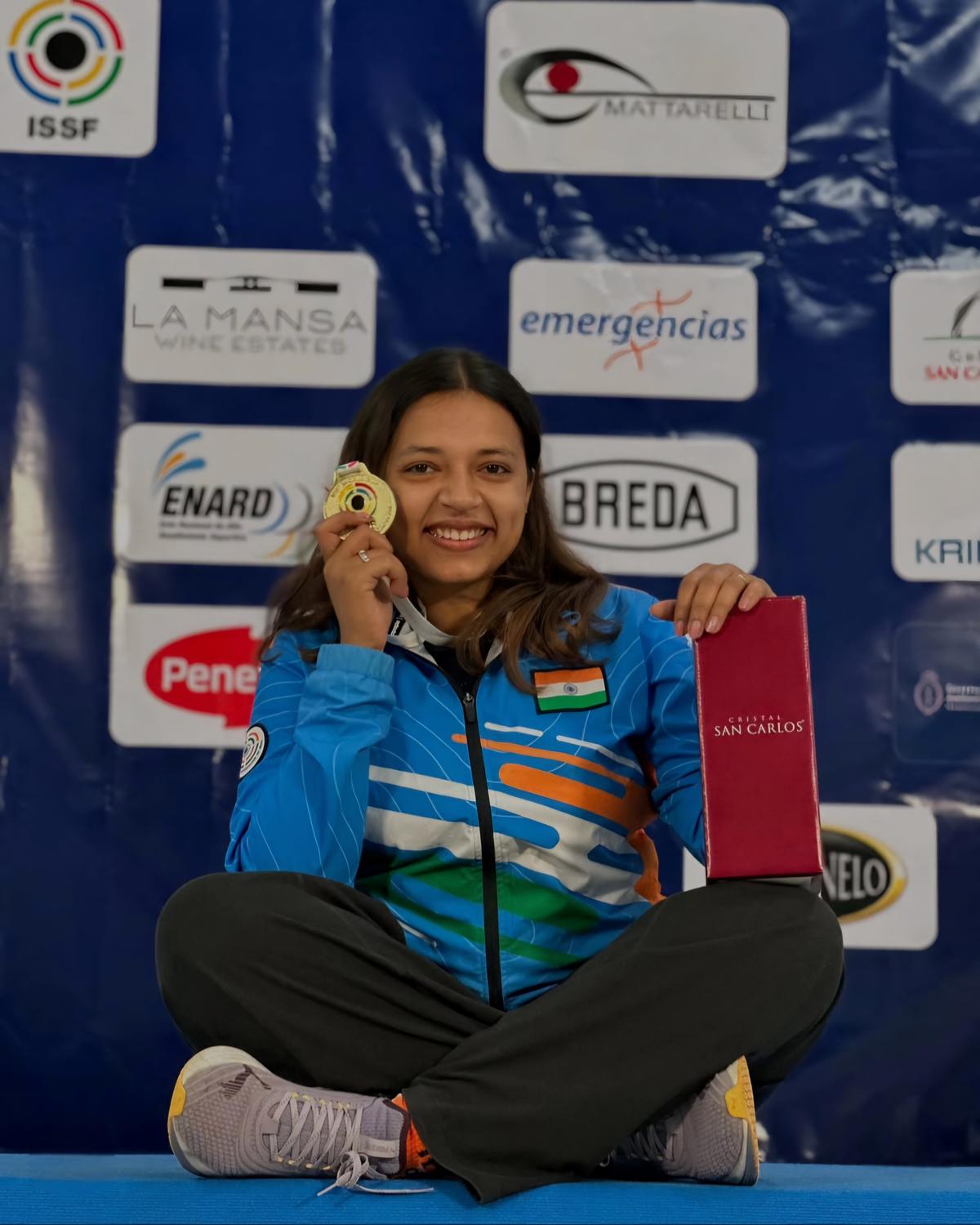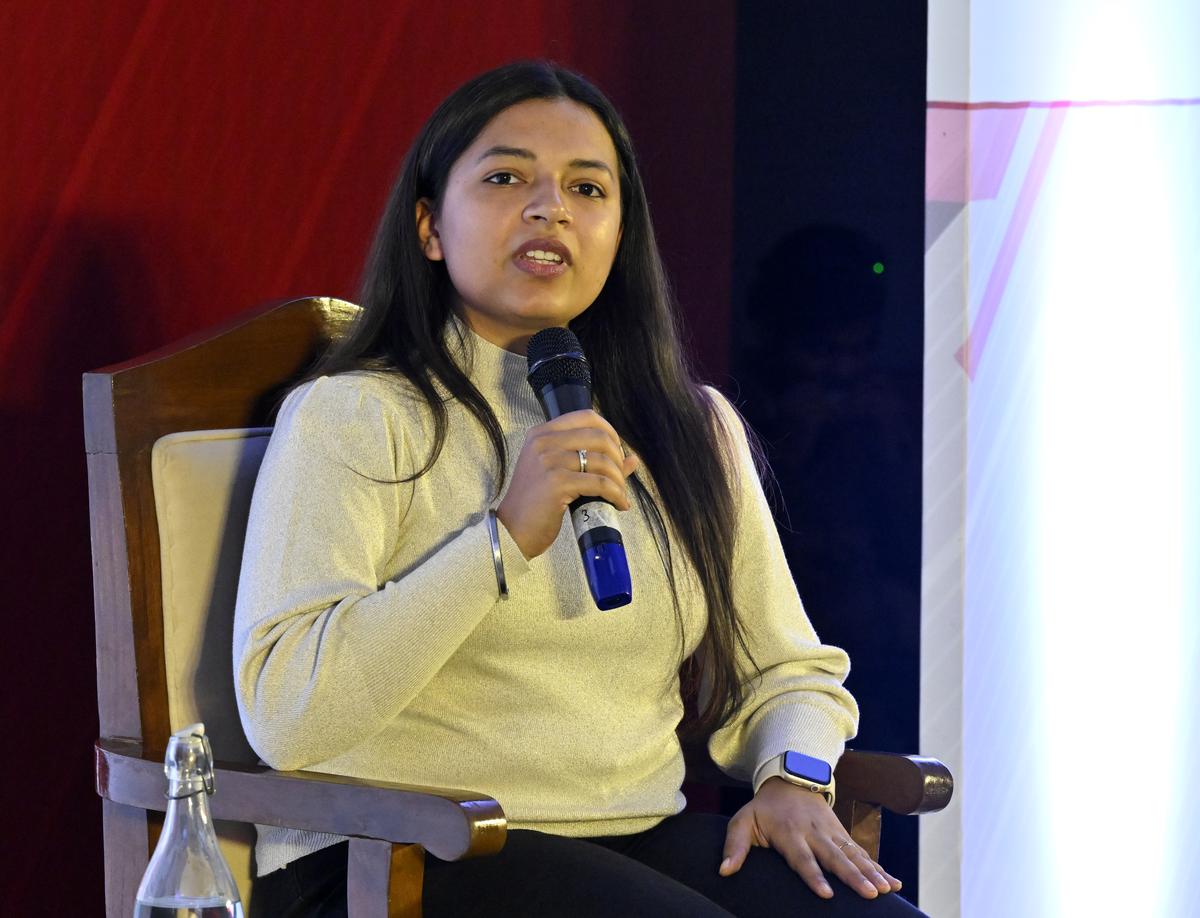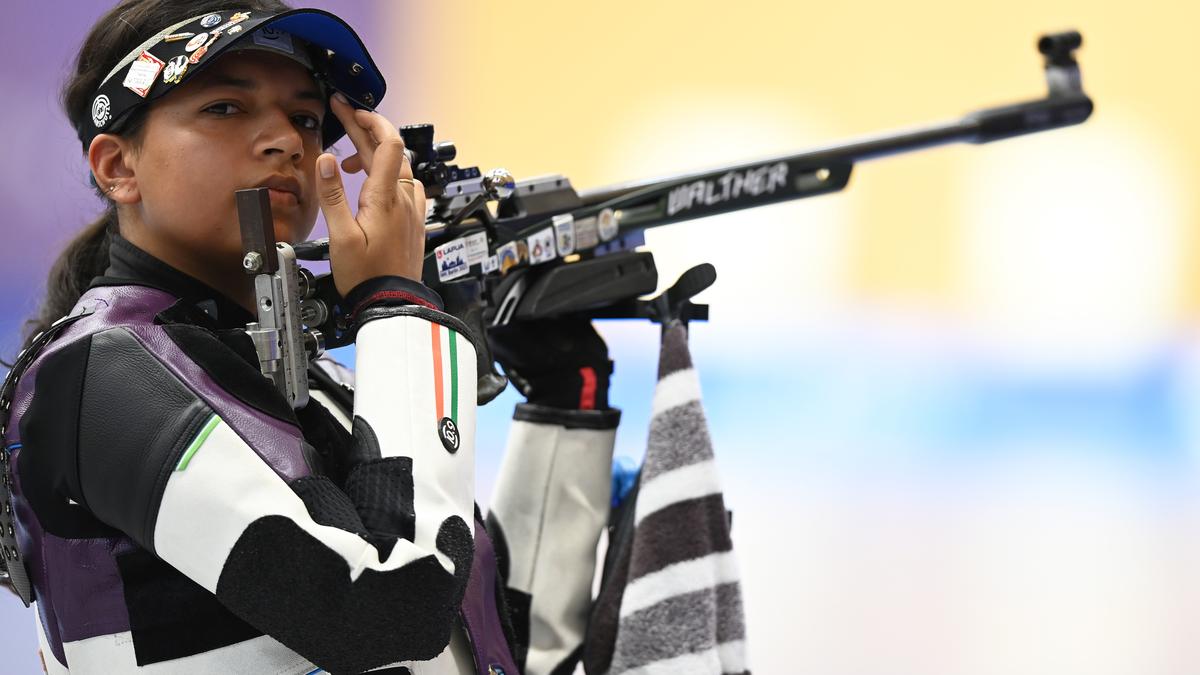50 metres, three positions, one destiny: Sift Kaur Samra’s World Cup comeback a sign of things to come
Sift Kaur Samra has the vibe of any other 23-year-old. A Bollywood buff, her heart beats for lo-fi music, distant horizons, and untold adventures.
She also swoons over puppies and swears by Italian platters at Chandigarh’s Virgin Courtyard. Her carefree demeanour is the very antithesis of the mental image we have of champion shooters.
But at the shooting range, a quiet focus takes over. As her eyes lock onto the target 50 metres away, her fingers are steady, and breath measured. Not even a smile escapes her lips, even when her .22-calibre bullet hits 10.9.
For a marathon discipline like 50m rifle 3 positions (3P), you need to display extraordinary levels of core strength, zen-like concentration, and above all, mental fortitude. Sift checks all the boxes. It’s almost as if she’s found the Powerpuff Girls’ Chemical X hidden away in an obscure corner of Professor Utonium’s cabinet.
Sift set a world record at the 2023 Asian Games with a score of 469.6, surpassing Seonaid McIntosh’s mark by 2.6 points. The record may not stand the test of time like javelin legend Jan Železný’s, who traced the arc of immortality with his throw of 98.48m almost 30 years ago, but Sift has already done her bit to reiterate that Indian shooting no longer merely takes part in marquee tournaments to make up the numbers.
In a country where world records in any sport are hard to come by, Sift’s story is one that many relate to. A dreamy-eyed girl sets out to become a doctor. Fast forward to 2019, and she’s traded the stethoscope for a rifle at the 50m range.
Almost miraculously, it takes her only four years to set a world record. Naturally, she is seen smiling across four columns of all newspapers the next day. Endorsements roll in. She becomes an overnight sensation with less than a year to go for the Paris Olympics.
A perfect protagonist. An inspiring narrative. But what’s a good story without an equally good redemption arc?
Almost as spectacularly as she rose, Sift took a fall. Expectations were high ahead of the Summer Games. In fact, she was touted to outshine poster girl Manu Bhaker. “It is only in India that the Olympics is hyped up so much. There is publicity even before the competition. It was all very new for me. When people started talking while it was all building up to the day, a bit of nerves had crept in,” Sift admits.
But, in the end, Sift finished 31st in a field of 32 to return empty-handed. She, her coach Deepali Deshpande, and even the odd fan scrolling through the online scoreboard were understandably stunned into silence.

Sift poses with her gold medal after her win at the Beunos Aires ISSF World Cup early this month.
| Photo Credit:
Special Arrangement
Sift poses with her gold medal after her win at the Beunos Aires ISSF World Cup early this month.
| Photo Credit:
Special Arrangement
Sift’s mother Ramnik Kaur, who was seated in the stands, had the most unexpected reaction of all. “My mom poked fun, saying you came second but from the bottom. This was right after I had packed. She was just trying to make me laugh,” Sift remembers.
The gravity of the situation, though, wasn’t lost on Ramnik. Knowing that Sift loved to travel, she promptly packed bags to get her daughter to shift her attention away from what had just transpired.
“Nobody allowed me to stay alone during that period because they figured that wouldn’t be the right thing to do,” Sift says.
“My parents asked me to pack my stuff. My cousin had come down and we went on a mini one-day trip. My mother kept saying, ‘It was just a bad day, let it go.’ Yes, the Olympics comes once every four years, but for a professional athlete, it is just another tournament where, unfortunately, I didn’t fare that well. It wasn’t like I was going to stop shooting after that. I was sulking a bit, but only because I knew people were expecting a lot from me. The bad aftertaste lingered until I came to India.”
Back home, Sift’s father, Pawandeep Singh, took charge. “The day after I landed, Dad sent me to the range to prepare for 10m air rifle for the upcoming State competition. My father never gave me the liberty of having an idle mind so that I didn’t end up overthinking. Some people said I should have rested. I do understand where they came from, but I feel it was also important to get it ingrained in my head that all was normal and nothing out of the ordinary had just happened.”
But how does one shake off an Olympic disappointment? It would seem Sift would have had to spend days in quiet introspection. But the reality, as it turns out, was very different.
“I had heard a lot of stories in the past. When people came back without a medal, they took time to recover. But then I thought: ‘What is the point of sitting and thinking about something I cannot go back and change?’”
And sure enough, Sift left it all behind like a bad dream. At the very start of the season on February 3, she struck gold at the National Games. A week later, she topped two selection trials. Incidentally, her T2 qualification score of 595 would have seen her become the first to qualify for the final in Paris 2024.
Quite unsurprisingly, she was the Indian team’s first pick for the season-opening ISSF World Cup in Argentina. The fact that Sift’s first international event straight after the Olympics was being held at the Tiro Federal Argentino de Buenos Aires, a range that hadn’t hosted a World Cup before, added further drama. No one knew what to expect.
The sighters done away with, Sift picked up where she left off in Delhi, even registering a perfect 100 in the second round of Kneeling. The qualification concluded without a hitch and Sift’s 590 secured her pole position ahead of the final. The first signs of trouble bobbed up when nature decided to play spoilsport.
“In India, we start competitions by 8:30-9 am. Here we started at 2:30 pm. The temperature and weather conditions are very different [according to historical data on Weather Underground, in Buenos Aires it was 16.1 degrees Celsius at that point in time, while in New Delhi the lowest recorded temperature on the same day was 21.1 degrees]. When we started our match, it was already extremely windy and cold. In the final, since it was already approaching sunset, the wind direction was changing and even the intensity was variable.”
Sift, clearly affected, couldn’t land a single shot inside the 10-ring in her first series of five shots. Having led through the qualification, she had suddenly dropped to last. And there was a 2.5-point difference between her and then seventh-placed Wang Zifei. When Kneeling finished, everyone except Sift was well inside the 150s. Sift’s score read 147.2.
A collective gasp ran through as Parisian flashbacks came back to the crowd. Sift, however, blessed with a mature head on young shoulders, didn’t freeze.
“‘I can’t give up hope,’ I thought. And one good thing about 3P is that even if one of your positions is ruined, you have two more to recover in. This wasn’t the first time I was doing badly in Kneeling. It was very bad, yes, but nothing I had not been through.”

Sift speaks during the Punjab Sportstar Conclave in 2024.
| Photo Credit:
R. V. Moorthy
Sift speaks during the Punjab Sportstar Conclave in 2024.
| Photo Credit:
R. V. Moorthy
In Prone, she fared comparatively better, but she was still at the bottom of the pile. The gap to seventh place, though, had come down to 0.2. “By the time we started Standing, it had started to go dark. I faced a lot of problems, but knew I had to shoot well here to recover my rankings,” Sift says.
Standing has always been her favourite position, but earlier that day in the qualification, Sift had scored the lowest in it. But that didn’t matter as Sift started Standing — also the elimination round — with a bang. She shot 52.3 and 51.2 in the first two series, which not only saw her dodge the axe but also propelled her to the very top of the leaderboard.
And once she had broken free from the pack, there was no looking back. She kept widening the gap at the top to eventually claim the gold medal with a score of 458.6. Germany’s Anita Mangold won silver with 455.3. Interestingly, Sift had been a massive 7.2 points behind Anita after Kneeling!
She would later confess she had help. “I’d say it was God who helped me bridge the gap,” she says.
Sift did fall short of the final spot in the subsequent Peru World Cup by one point, but she has a shot at becoming the first Indian woman to win the World Championship gold in November. “I will try my best is all I can say. It will be in Cairo, where it will be windy. I have been there. It will be at the end of the year, so there is a lot of time left. Before that, we will have the Asian Championship as well,” Sift says, her brows furrowed and gaze unwavering.
And there it was — the very real image of the quintessential champion shooter.
“It will be a little bit interesting. I don’t know many details, though, be it the number of shots we will be taking or the time we will be getting. Now, in Standing, we have 50 seconds for a single shot. But I think this will be good for the Indians because all our athletes have a very good [record in] ‘Standing’. It is a favourable position for us. It is going to help us, but we never know, because now all the athletes — even foreigners — will also work on a single position. It is a new thing. We are excited to find out how challenging it will be.
We haven’t discussed [the training regime] yet. The qualification will be the same, though. So, we will have to go through all three positions, and do well in all of them. Once the [detailed] rules come, only then will we be able to draw out a strategy on how to work on this new change”Sift shares her thoughts on the introduction of a ‘Standing only’ 50m 3 Positions final for the next Olympics



